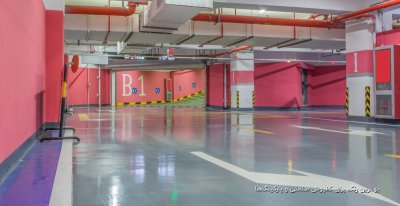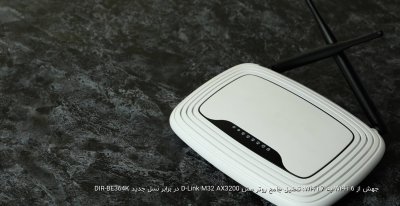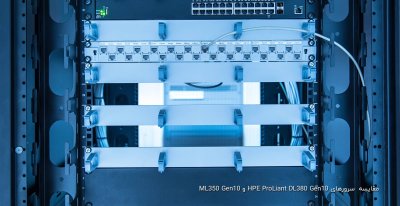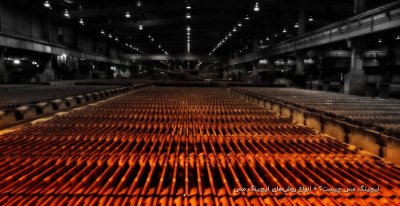saeedmentalray
New Member
http://extratorrent.com/torrent_dow...nd+Rendering+with+Mental+Ray+-+iNKiSO.torrent
لینکش بالاست
مطالشم ایناست
Introduction
* Welcome 00:55
* Using the exercise files 01:02
* Setting a project folder 03:31
1. Concepts
* Understanding mental ray 02:44
* Understanding local illumination 04:09
* Understanding global illumination 02:22
* Assigning the mental ray renderer 02:11
* Using the rendered frame window controls 02:23
2. Gamma Correction
* Understanding gamma 02:39
* Recognizing the symptoms of incorrect gamma settings 01:55
* Applying gamma correction 01:38
3. Ray Tracing
* Understanding raytracing 01:30
* Limiting the trace depth of reflections and refractions 03:39
* Applying a raytrace reflection map to a standard material 03:19
* Applying a raytrace refraction map to a standard material 04:55
* Setting the index of refraction 02:28
* Using architectural materials for raytraced reflections 03:55
4. Transparency
* Modeling thin, transparent objects such as window glass 03:03
* Disabling shadows 01:53
* Setting simple transparency 06:05
5. Materials
* Understanding the pros and cons of mental ray materials 03:22
* Getting familiar with the arch & design material 03:54
* Learning from the arch & design templates 04:17
* Working with diffuse color and diffuse level 03:04
* Setting reflectivity and glossiness 07:55
* Rendering thin wall reflections 03:07
* Rendering solid glass 04:56
* Controlling BRDF 04:36
* Rendering translucency 03:17
* Using ProMaterials 04:14
6. Photometrics and Exposure Control
* Understanding photometrics 03:56
* Understanding the importance of modeling to scale 05:39
* Using free lights 04:32
* Selecting photometric templates 03:18
* Understanding mr photographic exposure control 02:54
* Adjusting brightness with exposure value 02:45
* Using photographic exposure settings 03:15
* Understanding color temperature 03:10
* Setting the exposure whitepoint 04:52
* Adjusting contrast with exposure image control 04:42
7. Advanced Photometrics
* Installing and using photometric .IES files 08:02
* Choosing a light distribution type 03:10
* Setting light intensity 04:19
* Using target lights 02:37
* Adjusting spotlight hotspot and falloff angles 02:59
* Emitting light from shape 05:13
8. Shadows
* Understanding the pros and cons of shadow types 03:34
* Controlling shadows via object properties 01:30
* Controlling shadows via light exclusion 02:50
* Rendering shadow map shadows 03:34
* Rendering raytraced shadows 02:46
9. Final Gather
* Understanding final gather 02:33
* Adjusting exposure control for final gather 03:24
* Setting initial FG point density and rays per FG point 04:10
* Setting interpolation and diffuse bounces 03:15
* Tuning final gather settings to the scene 02:08
* Controlling object properties for final gather 03:53
* Optimizing final gather for animations 05:24
10. Sampling Quality
* Controlling render quality with samples per pixel 04:11
* Understanding spatial contrast settings 02:27
* Using filter settings to apply blur for anti-aliasing 03:31
11. Exterior Daylight
* Creating a daylight system 02:01
* Setting the location, date, and time from the Motion panel 03:02
* Choosing mr sun and mr sky from the Modify panel 02:03
* Understanding the mr physical sky environment map 02:18
* Adjusting exposure value and image control 03:40
* Setting the exposure whitepoint 01:51
* Choosing a sky model 03:24
* Controlling haze 05:28
* Working with mr sky advanced parameters 03:25
12. Interior Daylight
* Understanding mr sky portals 02:37
* Creating mr sky portals 02:09
* Controlling mr sky portal shadows 04:32
13. Rendering Environment Backdrops in 3ds Max
* Understanding the pros and cons of environment mapping 01:40
* Acquiring or creating background images 02:07
* Modeling a flat image plane backdrop 04:01
* Increasing map output for use with exposure control 04:34
* Adjusting the color map to color-correct the backdrop 06:43
* Applying a LookAt constraint to the image plane 05:46
* Modeling cylindrical panorama backgrounds 05:33
14. Compositing Environment Backdrops in Photoshop
* Understanding alpha channels 01:11
* Rendering still images for After Effects or Photoshop 03:06
* Converting the alpha channel to a Photoshop layer mask 03:01
* Using Photoshop adjustment layers for color correction 05:09
15. Ambient Occlusion in Arch & Design Materials
* Understanding ambient occlusion 02:05
* Enabling AO in the arch & design material 01:53
* Using color from other materials 01:50
* Setting ambient occlusion parameters 03:46
16. Scene-Wide Ambient Occlusion
* Understanding the need for a "poor man's global illumination" 02:50
* Creating a standard omni light at the origin 01:51
* Setting intensity and enabling ambient only 01:56
* Creating an ambient/reflective occlusion map 02:51
* Adjusting type and samples 01:07
* Setting bright and dark 02:44
* Understanding spread 01:40
* Setting max distance and falloff 03:08
* Excluding transparent and self-illuminated objects 04:07
17. Volume Lights
* Understanding atmospheres 01:00
* Adding a volume light atmosphere 01:28
* Setting exposure physical scale to "unitless" 01:23
* Adjusting volume light parameters 01:56
* Adding noise to the volume light 02:26
18. Lens Effects
* Understanding lens effects 00:51
* Adding a lens effect to a light 03:19
* Adjusting lens effect globals 01:40
* Setting glow element parameters 02:14
* Adding a star element 02:13
Conclusion
* Goodbye 00:10
لینکش بالاست
مطالشم ایناست
Introduction
* Welcome 00:55
* Using the exercise files 01:02
* Setting a project folder 03:31
1. Concepts
* Understanding mental ray 02:44
* Understanding local illumination 04:09
* Understanding global illumination 02:22
* Assigning the mental ray renderer 02:11
* Using the rendered frame window controls 02:23
2. Gamma Correction
* Understanding gamma 02:39
* Recognizing the symptoms of incorrect gamma settings 01:55
* Applying gamma correction 01:38
3. Ray Tracing
* Understanding raytracing 01:30
* Limiting the trace depth of reflections and refractions 03:39
* Applying a raytrace reflection map to a standard material 03:19
* Applying a raytrace refraction map to a standard material 04:55
* Setting the index of refraction 02:28
* Using architectural materials for raytraced reflections 03:55
4. Transparency
* Modeling thin, transparent objects such as window glass 03:03
* Disabling shadows 01:53
* Setting simple transparency 06:05
5. Materials
* Understanding the pros and cons of mental ray materials 03:22
* Getting familiar with the arch & design material 03:54
* Learning from the arch & design templates 04:17
* Working with diffuse color and diffuse level 03:04
* Setting reflectivity and glossiness 07:55
* Rendering thin wall reflections 03:07
* Rendering solid glass 04:56
* Controlling BRDF 04:36
* Rendering translucency 03:17
* Using ProMaterials 04:14
6. Photometrics and Exposure Control
* Understanding photometrics 03:56
* Understanding the importance of modeling to scale 05:39
* Using free lights 04:32
* Selecting photometric templates 03:18
* Understanding mr photographic exposure control 02:54
* Adjusting brightness with exposure value 02:45
* Using photographic exposure settings 03:15
* Understanding color temperature 03:10
* Setting the exposure whitepoint 04:52
* Adjusting contrast with exposure image control 04:42
7. Advanced Photometrics
* Installing and using photometric .IES files 08:02
* Choosing a light distribution type 03:10
* Setting light intensity 04:19
* Using target lights 02:37
* Adjusting spotlight hotspot and falloff angles 02:59
* Emitting light from shape 05:13
8. Shadows
* Understanding the pros and cons of shadow types 03:34
* Controlling shadows via object properties 01:30
* Controlling shadows via light exclusion 02:50
* Rendering shadow map shadows 03:34
* Rendering raytraced shadows 02:46
9. Final Gather
* Understanding final gather 02:33
* Adjusting exposure control for final gather 03:24
* Setting initial FG point density and rays per FG point 04:10
* Setting interpolation and diffuse bounces 03:15
* Tuning final gather settings to the scene 02:08
* Controlling object properties for final gather 03:53
* Optimizing final gather for animations 05:24
10. Sampling Quality
* Controlling render quality with samples per pixel 04:11
* Understanding spatial contrast settings 02:27
* Using filter settings to apply blur for anti-aliasing 03:31
11. Exterior Daylight
* Creating a daylight system 02:01
* Setting the location, date, and time from the Motion panel 03:02
* Choosing mr sun and mr sky from the Modify panel 02:03
* Understanding the mr physical sky environment map 02:18
* Adjusting exposure value and image control 03:40
* Setting the exposure whitepoint 01:51
* Choosing a sky model 03:24
* Controlling haze 05:28
* Working with mr sky advanced parameters 03:25
12. Interior Daylight
* Understanding mr sky portals 02:37
* Creating mr sky portals 02:09
* Controlling mr sky portal shadows 04:32
13. Rendering Environment Backdrops in 3ds Max
* Understanding the pros and cons of environment mapping 01:40
* Acquiring or creating background images 02:07
* Modeling a flat image plane backdrop 04:01
* Increasing map output for use with exposure control 04:34
* Adjusting the color map to color-correct the backdrop 06:43
* Applying a LookAt constraint to the image plane 05:46
* Modeling cylindrical panorama backgrounds 05:33
14. Compositing Environment Backdrops in Photoshop
* Understanding alpha channels 01:11
* Rendering still images for After Effects or Photoshop 03:06
* Converting the alpha channel to a Photoshop layer mask 03:01
* Using Photoshop adjustment layers for color correction 05:09
15. Ambient Occlusion in Arch & Design Materials
* Understanding ambient occlusion 02:05
* Enabling AO in the arch & design material 01:53
* Using color from other materials 01:50
* Setting ambient occlusion parameters 03:46
16. Scene-Wide Ambient Occlusion
* Understanding the need for a "poor man's global illumination" 02:50
* Creating a standard omni light at the origin 01:51
* Setting intensity and enabling ambient only 01:56
* Creating an ambient/reflective occlusion map 02:51
* Adjusting type and samples 01:07
* Setting bright and dark 02:44
* Understanding spread 01:40
* Setting max distance and falloff 03:08
* Excluding transparent and self-illuminated objects 04:07
17. Volume Lights
* Understanding atmospheres 01:00
* Adding a volume light atmosphere 01:28
* Setting exposure physical scale to "unitless" 01:23
* Adjusting volume light parameters 01:56
* Adding noise to the volume light 02:26
18. Lens Effects
* Understanding lens effects 00:51
* Adding a lens effect to a light 03:19
* Adjusting lens effect globals 01:40
* Setting glow element parameters 02:14
* Adding a star element 02:13
Conclusion
* Goodbye 00:10
































